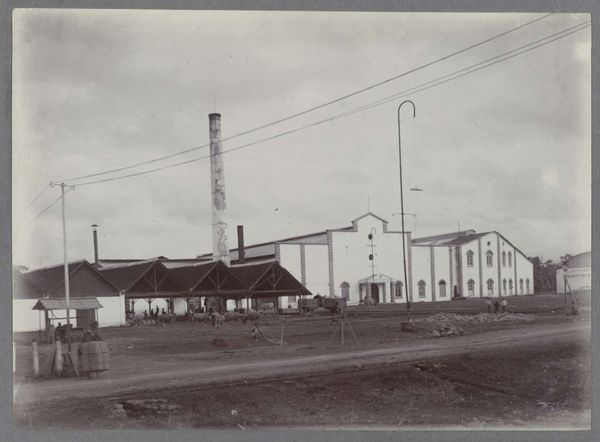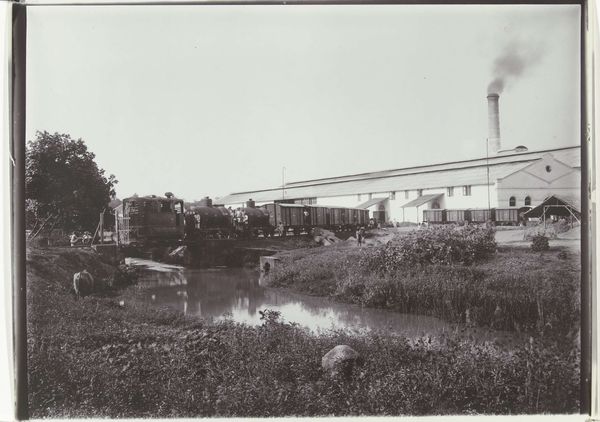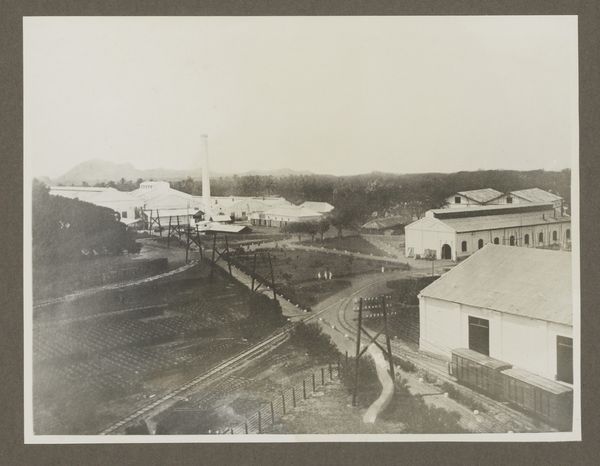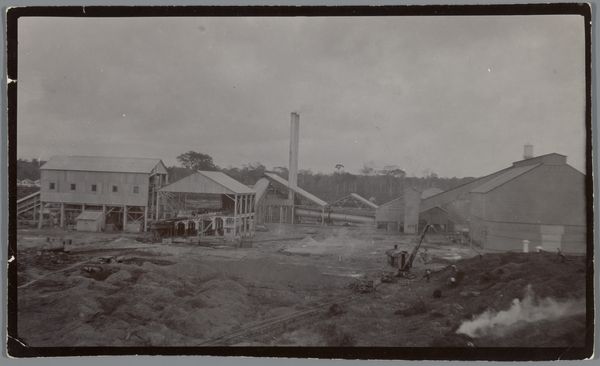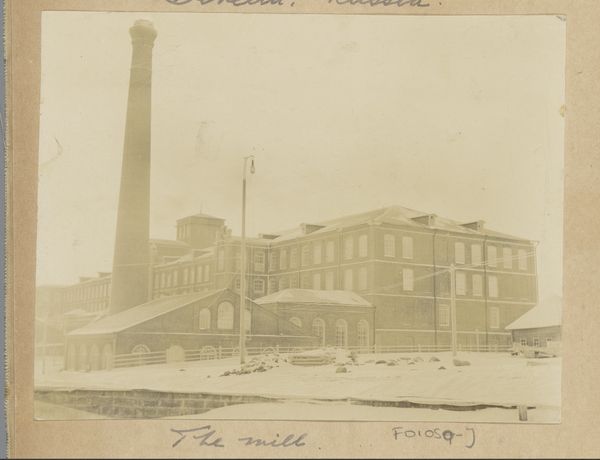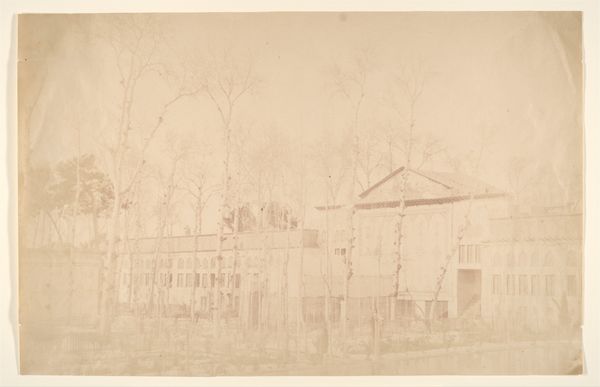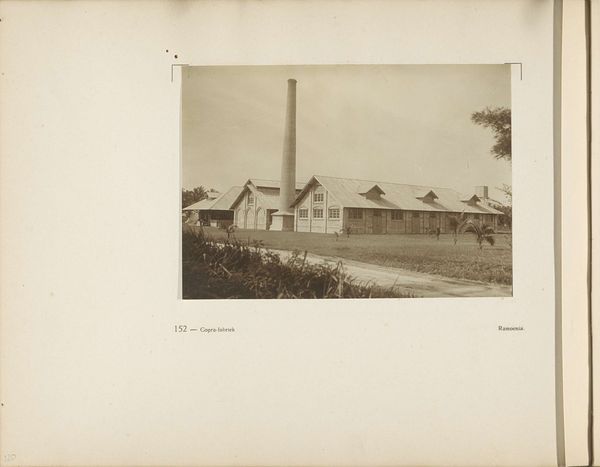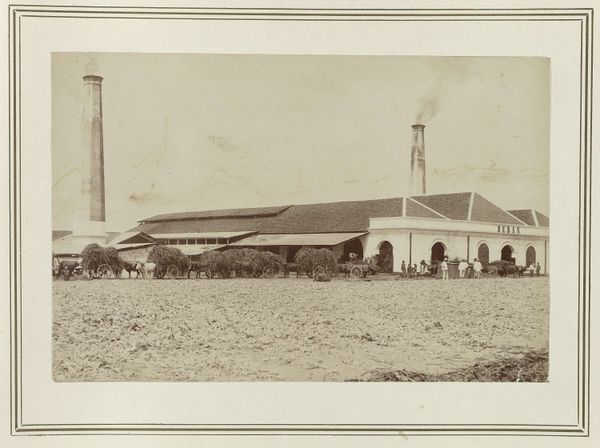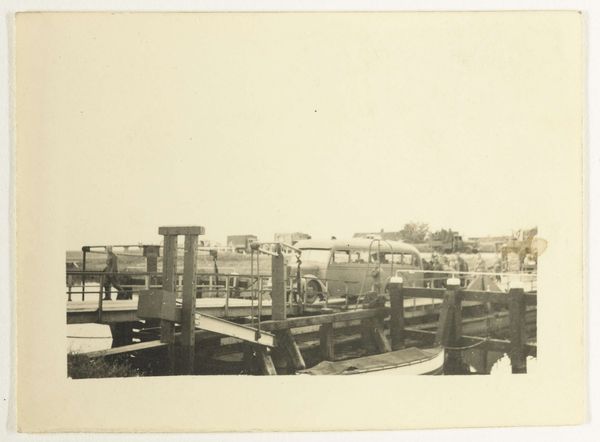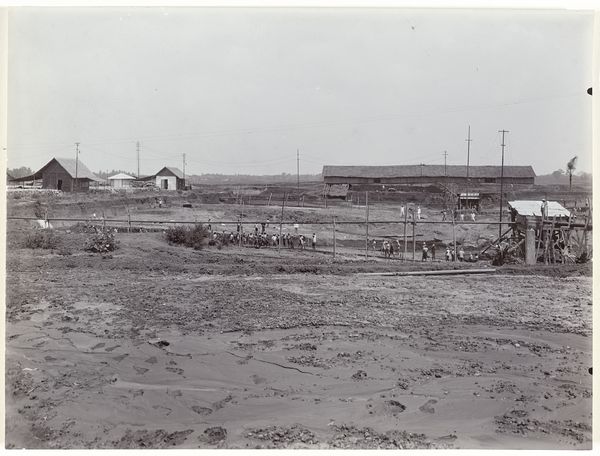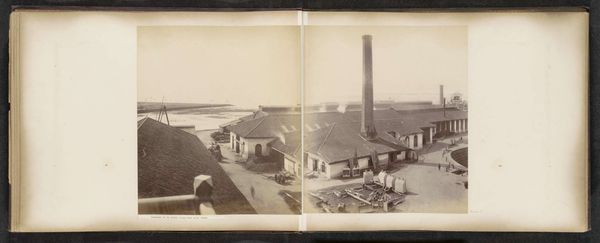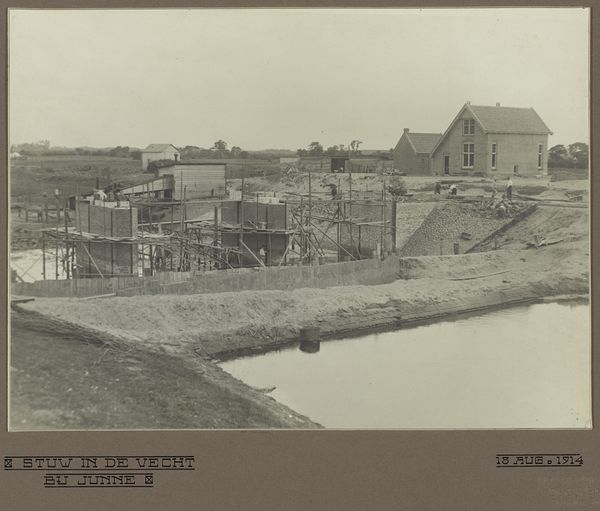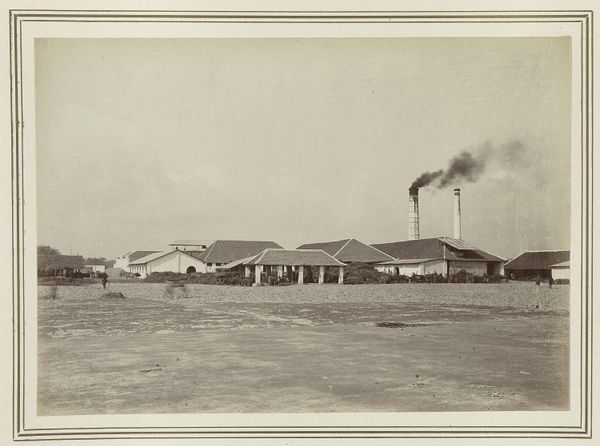
photography, gelatin-silver-print
#
photo of handprinted image
#
landscape
#
photography
#
gelatin-silver-print
#
modernism
#
realism
Dimensions: height 224 mm, width 262 mm
Copyright: Rijks Museum: Open Domain
Curator: We're looking at Carl J. Kleingrothe's photograph, "Fabriekscomplex aan de oostkust van Sumatra," taken between 1889 and 1905. It's a gelatin silver print. Editor: Stark. The starkness of the geometry against that sort of bleached sky almost renders the factories like relics, divorced from activity despite their evident functionality. Curator: Precisely. Notice how Kleingrothe frames the composition. The strong horizontal lines of the train tracks lead the eye directly into the industrial structures, while the verticality of the chimneys punctuates the sky, establishing a visual hierarchy. Editor: Those lines of the tracks though – iron laid on land wrested perhaps from the earth through grueling labour, and for what? To facilitate the manufacture of some unknown commodity, the destination of which likely mirrors the path of exploitation implicit in this industrial endeavour. I am also intrigued with the material limitations of a gelatin silver print impacting our perception today of tropical Sumatra. Curator: You introduce a vital perspective on materiality. The choice of gelatin silver itself is crucial—its capacity to capture minute details gives a documentary feel. Yet, the photograph’s tones transform Sumatra into something simultaneously real and remote. The image is meticulously arranged; the placement of each element—the tracks, the structures, even the hint of vegetation—conveys calculated meaning. The balance evokes power. Editor: The photographic medium, in this instance, documents a particular relationship between resources and technology, reflecting broader patterns of industrialization and its disruptive impacts. Even the choice of what to include in the frame represents a specific, charged perspective. Curator: I see in that the tension, that deliberate capture. We consider not just the visual components but the system of visuality created through sharp perspective, shadow and carefully arranged architecture and landscape to underscore the magnitude of these industrial structures, their effect. Editor: It's not only a documentation but a historical testament to both progress and the concealed human labor behind it. The scale, materials, and visual language all coalesce to highlight how industries redefine the landscapes and societies. Curator: The image resonates beyond just its subjects or even the photographic qualities. We have delved a little into the social ramifications of material reality and form within a captured time and place. Editor: Indeed. Hopefully this dialogue gives some points to consider what stories such visual document can offer.
Comments
No comments
Be the first to comment and join the conversation on the ultimate creative platform.
